Genoa, in Northern Italy, is the busiest port in the Mediterranean Sea. Most people will know it as the birthplace of Christopher Columbus. But I wonder how many know that it is also the place where blue jeans were first designed, in the 14th century?
The aptly named Christopher Columbus airport is 7km from the city. It is serviced mainly by European airlines flying to and from other parts of Italy and some European cities.
I travelled by train from Milan. This took 94 minutes and a 1st class return ticket cost €58. I had booked my hotel using air miles, so splashed out a little and stayed at the 5 star Grand Hotel Savoia.
The main train station is at Piazza Principle. The first thing I noticed as I walked out was the huge statue of Christopher Columbus. My hotel was in sight of the station, just up a small hill to the left.
I spent 3 nights in Genoa and wished I had an additional night or 2. It’s a great city to walk around and it felt very safe even at nighttime. As well as the port, Genoa is known for its narrow streets, which are called “The Carruggio.” Translated as alleyway, they were designed to protect the city from outsiders. They now make it one of the most unusual cities to walk around on mainland Europe.
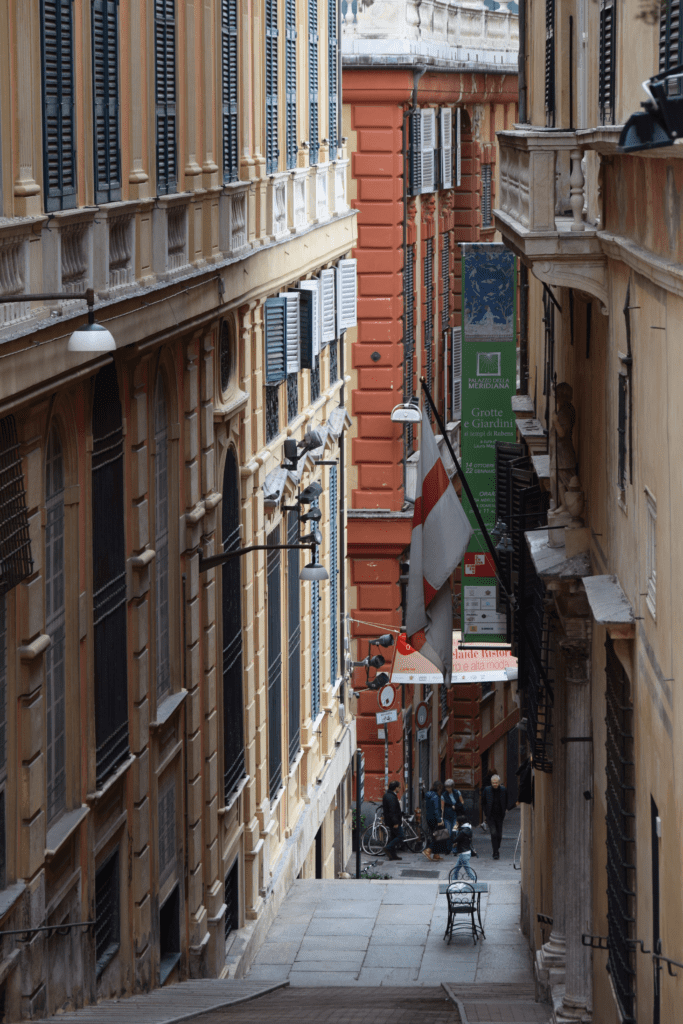
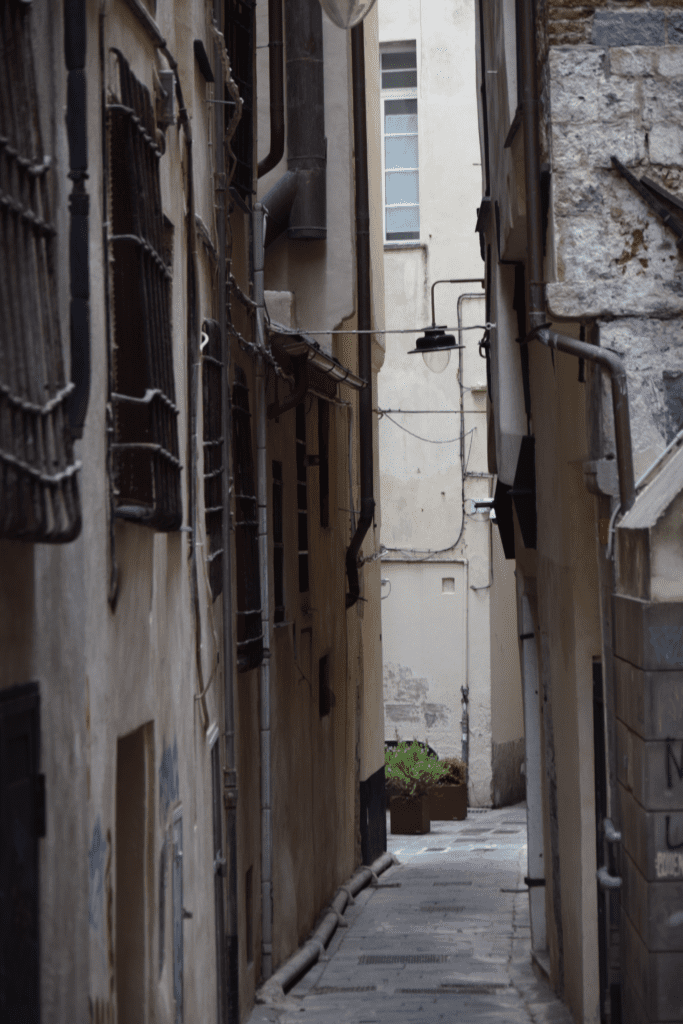
The following are the things I saw and learnt.
Port Area
I walked straight down to the port area as I love to see the sea. The first thing that struck me was how many huge luxury yachts were docked there. When you looked back at the city landscape, it really was a peculiar mixture of the old and the new.
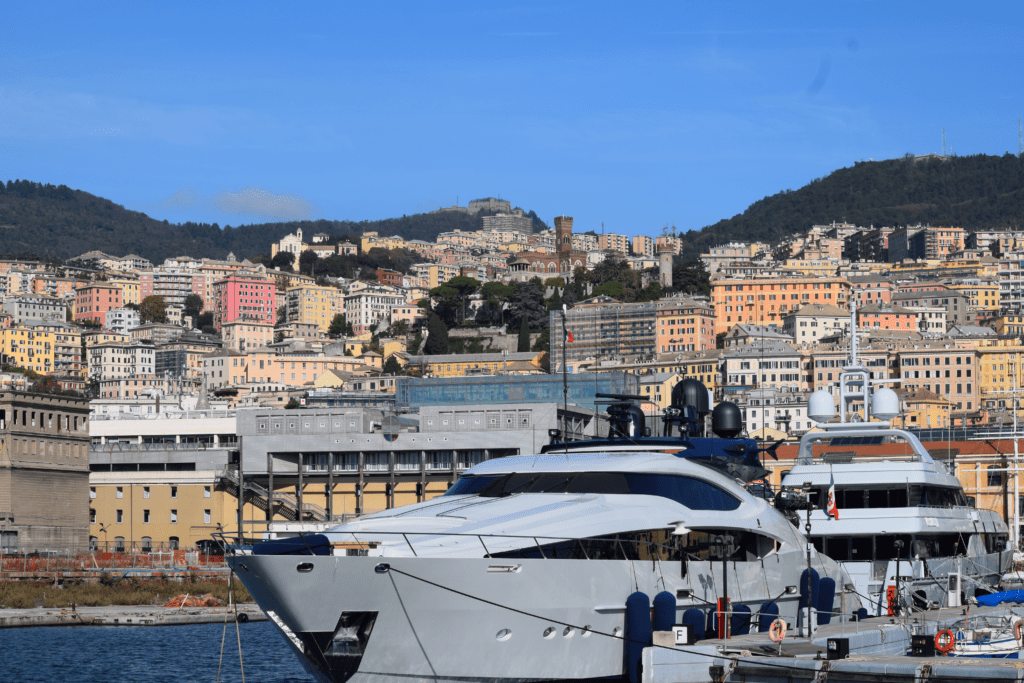
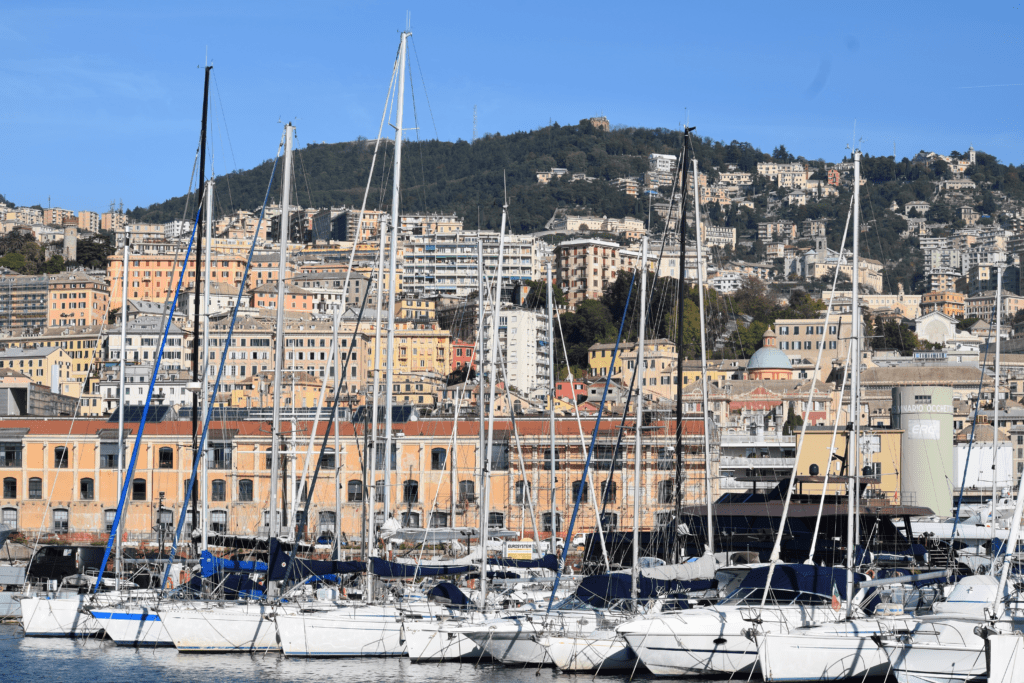
There is a large Aquarium at the pier. I didn’t go in but it seemed very busy and tickets cost approximately €27. Prices seem to vary online so if you are attending, particularly with a large group, do shop around. They can also be purchased at the box office.
There was a real buzz on the pier even though it was a cold day. There were seats in several areas and people were milling around, taking photographs and enjoying the view.
Bisosphere
My eyes were immediately drawn to the unusual glass dome, situated half way down the pier. I walked over to discover the Biosphere, resigned by Renzo Piano for the G8 summit in 2001. Locals affectionately call it the “Glass Bubble.” A ticket to enter cost €5 and you can also purchase a ticket combined with entrance to the Aquarium.
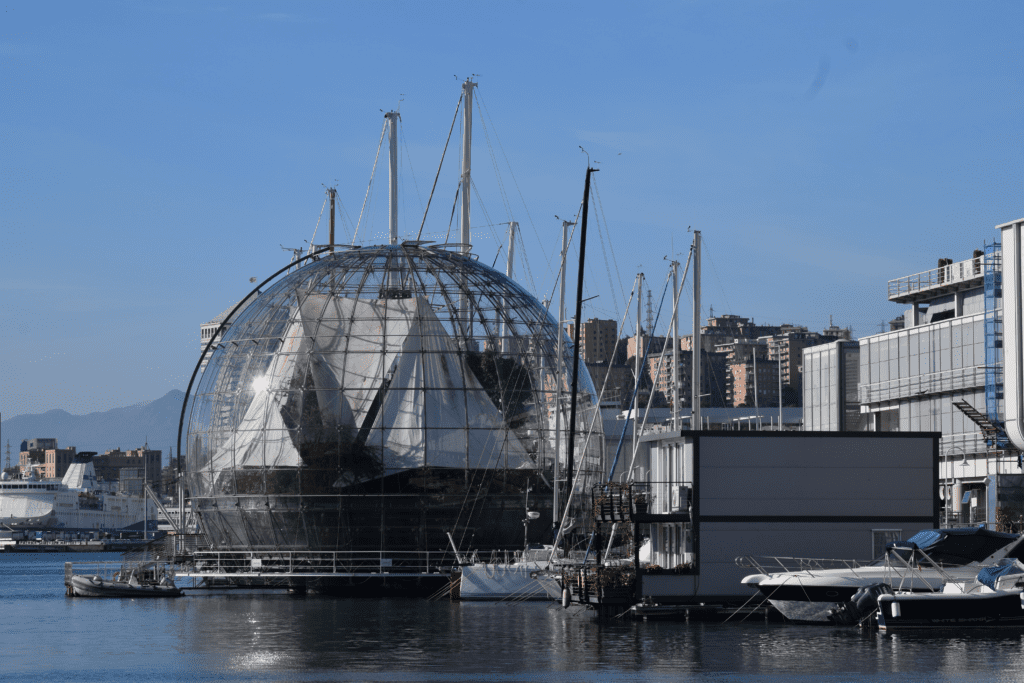
I felt I had walked into a rainforest, as the biosphere has over 150 types of plants, butterflies and reptiles. Walking aimlessly around the small path areas were several “Scarlet Ibis”. They seemed happy wandering around but also thankfully posed for a few photos for me.

Signs are placed everywhere explaining where the tropical plants, reptiles etc are from. They also tell you when to look up, so you don’t miss a creature hiding away out of view.
I spent about an hour wandering around the looped pathway and recommend you don’t miss this attraction on your visit to Genoa.
Piazza De Ferrari
The distinctive Piazza de Ferrari is framed by beautiful historic buildings. It has a huge fountain in the middle, which has recently been restored. The square was named after Raffaele De Ferrari, who was a former Duke of Galleria and not associated with the famous car brand.
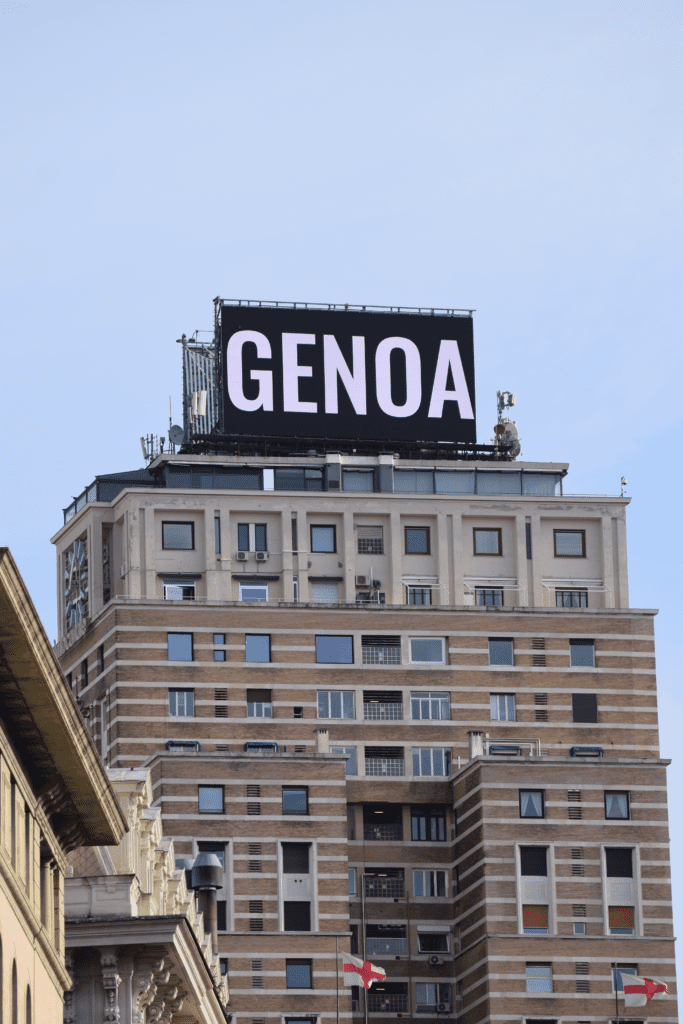
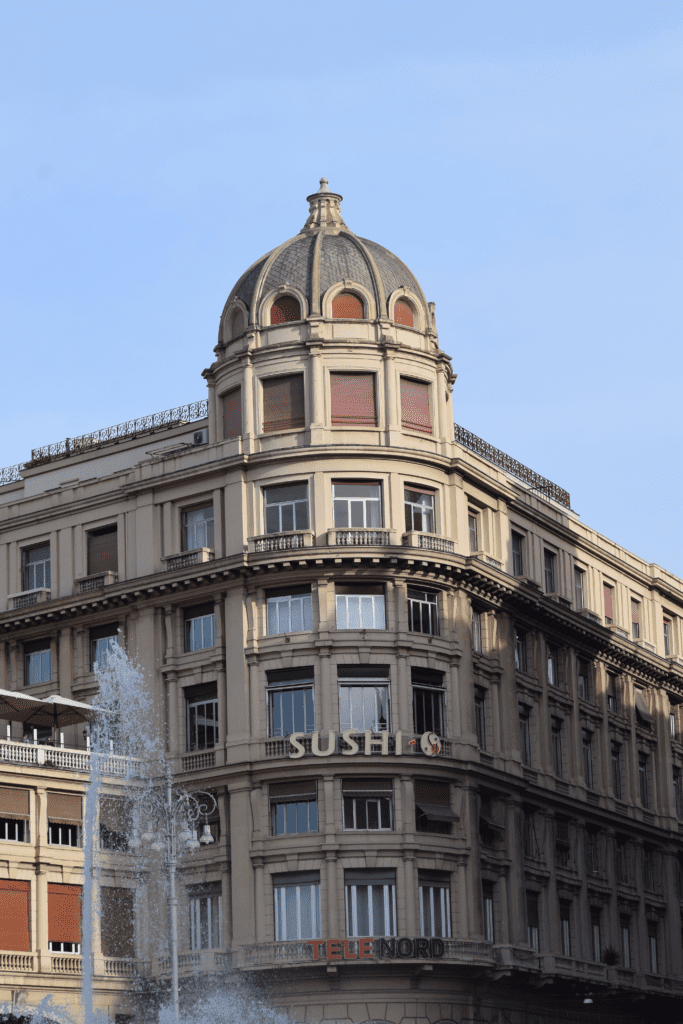
This part of town is considered the financial and economic hub. There are also lots of large modern office buildings with global banking names visible in neon and coloured signs. It is worth visiting this to see the beautiful architecture.

Museum Palazzo Reale
This museum is situated on via Bali, a short walk from the main train station. You visit 3 extremely impressive buildings that were originally owned by families involved in the silk trade (the Balbi family) and the banking industry (Durazzo family). They were built in the 17th century. Since 1919, the palace has been owned by the state. In 2006, the museum was placed on the Unesco World Heritage list.
The entrance fee to all 3 buildings cost €10 and you really need to give yourself 2 to 3 hours to walk around and appreciate everything in the 23 rooms. Several rooms have interesting names such as “the Room of Time”, “the Room of Peace”, “the Throne Room” and others have mundane names such as bedroom and parlour.
There is a vast collection of sculptures, furnitures and objects on view throughout the main building. The pair of vases in the Kings Bed Chamber, the paintings by Anthony van Dyke in two of the Bed Chambers and Tintorettos “Portrait of a Lady with a glove” in the Room of Time are all highlights.
Musei Di Strada Nuova
Again I paid €10 to visit 3 museums all on via Garibaldi. They contain the largest collection of ancient art in Genoa. There are 75 rooms contained in the 3 buildings connected by courtyards, gardens and terraces.
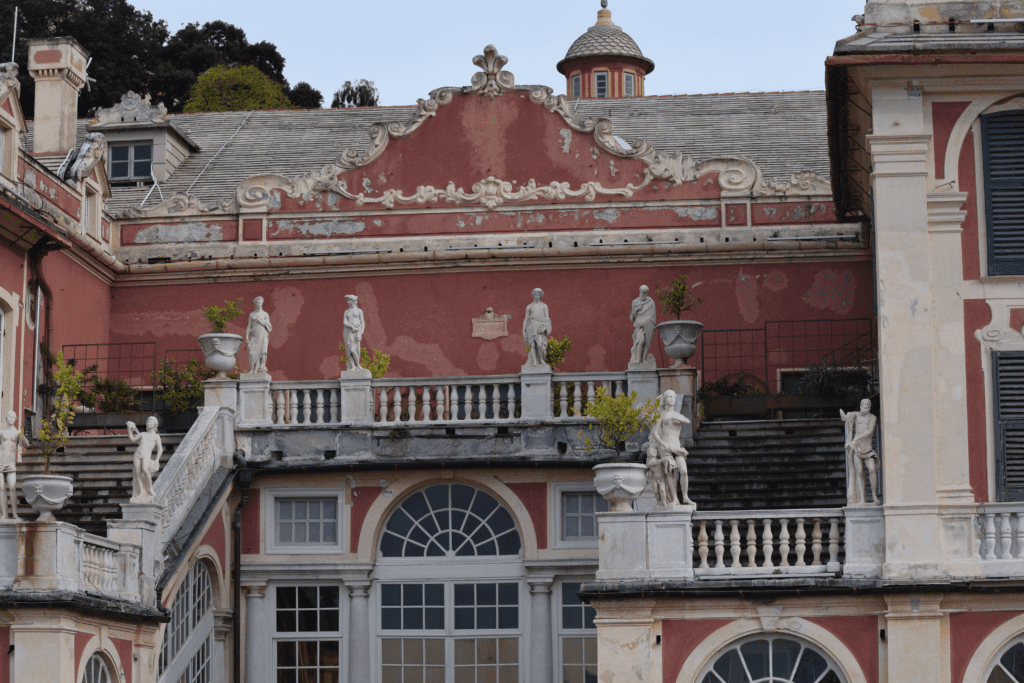
Palazzo Rosso is known as the house museum. The rooms are decorated in amazing frescos and stuccos and contain furnishings once owned by the Brignole Sale families. They were silk merchants and the family line dates back to the 15th century.
Palazzo Bianco is the main art gallery and houses art collections from Italian, Spanish and Flemish artists.
Palazzo Tursi is now used as the town hall and was historically considered the grandest private residence in the city. It contains ceramics, coins, weights and measures and tapestries.
I suggest you give yourself 2-3 hours to walk around and see everything on view. The views of the city and the pier are really breathtaking as you walk around the high walkways in these buildings. Sometimes, it was difficult to see where a luxury yacht stopped and a building started !
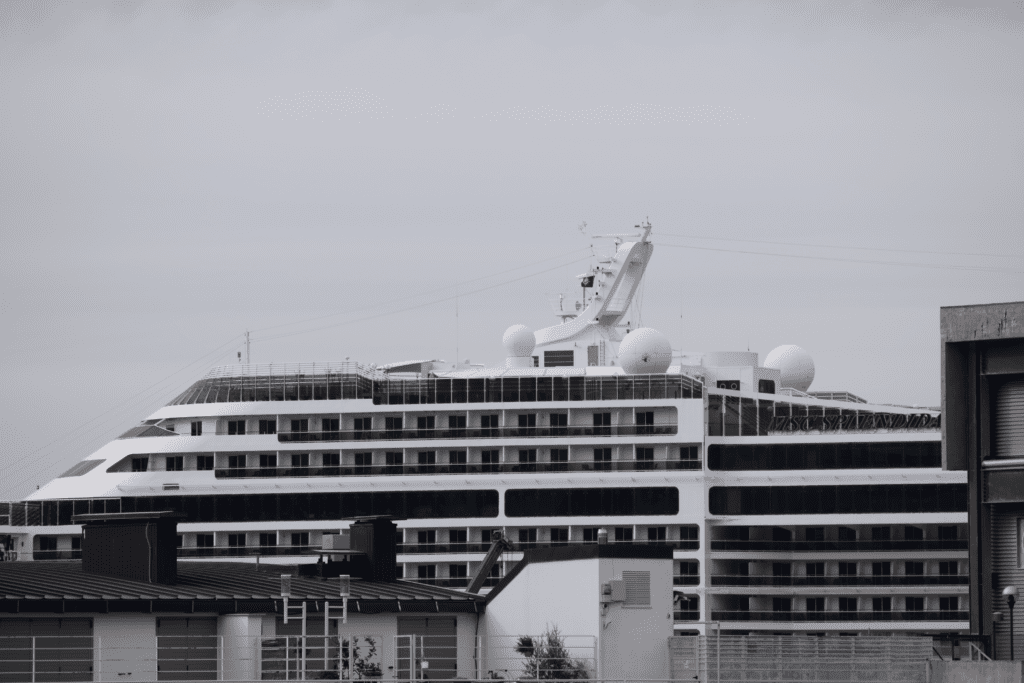
Grotte and Garden of Rubens
Entrance to this cost €10, which seemed expensive after getting 3 for the price of 1 previously. You are given an 8 page pamphlet when you purchase your ticket, available in multiple languages. There is really too much information in this to appreciate as you walk around and it doesn’t contain any pictures and the print is difficult to read.
Initially this was open from October 14th 2022 and 5 February 2023. It is expected it will be open again. I am not going to go into much detail here in case this isn’t open at the time of reading or on your visit. If you do get to attend, I suggest you sit down and read the pamphlet before walking around. I didn’t do that and read it afterwards and think I missed a lot of key things due to this.
Cathedral of San Lorenzo
No visit to an Italian city is complete without visiting the cathedral. I expected the cathedral here to be called Saint Christopher after the patron saint of travellers, but maybe that would be too literal !
The gothic cathedral of San Lorenzo was consecrated in 1118 so has certainly been around for some time. The bell tower (containing 7 bells) and dome were added in the 16th century.
As soon as you walk in, your eyes are drawn to the partial dome over the altar area. It really is impressive with 14th century frescoes in the Byzantine style and framed in gold brocade.

There are several sculptures throughout including St. John the Baptist by Sansovino. The pink and white marble pulpit is another beautiful feature.

The Museum of the Treasury is under the cathedral holding a collection of artefacts dated back to 9 AD. It has a chalice that is thought to be the one Jesus Christ used during the Last Supper. This wasn’t open the day I attended, but I certainly want to go on my next visit.
Food
Genoa is of course the home of Genovese Pesto sauce. You see it sold everywhere in the tourist shops. Most restaurants had a pasta dish served with pesto sauce and I enjoyed several vegetarian ones. I also had a bowl of minestrone soup one day for lunch (minestrone soup is always vegetarian in Italy and doesn’t contain bacon as is often the case in the US). It was served with a generous portion of pesto sauce and croutons. It really was delicious.
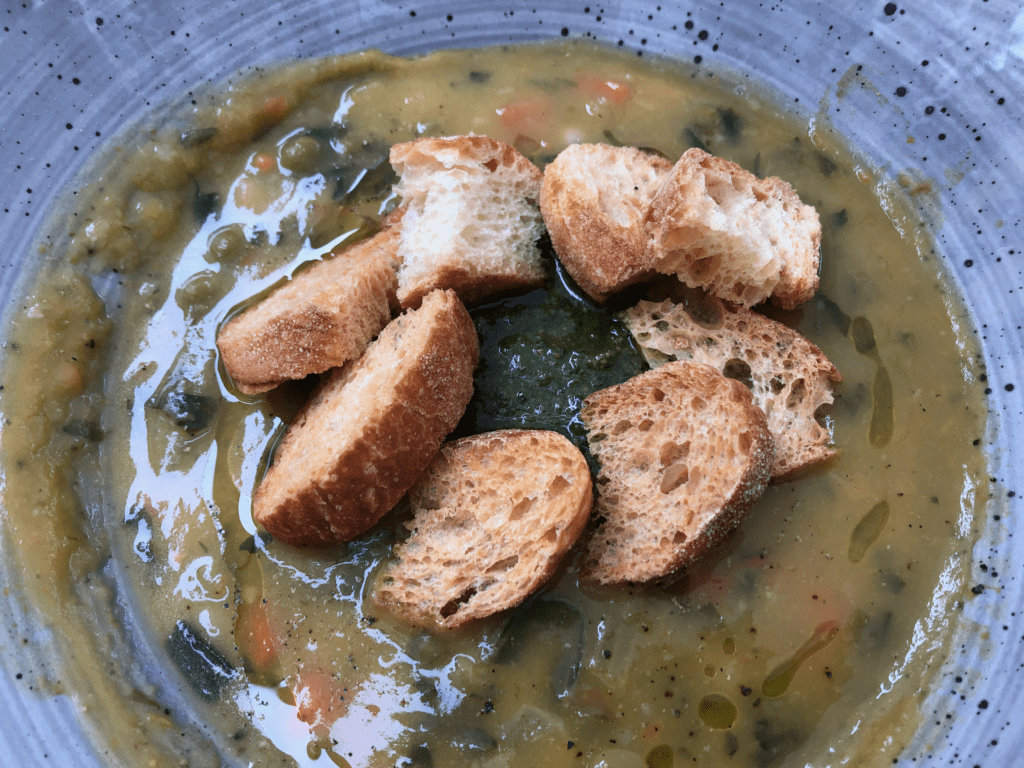
Panasoti with walnut sauce is a speciality of Genoa. It is a ravioli containing vegetables and covered in a creamy walnut sauce. It was way too creamy and heavy for me, but if you’re very hungry you may enjoy it.
Locals enjoy their bread and say that the best focaccia is made in Genoa. Some locals have it for breakfast and dip it into milk.
Genoa has its version of street food. Fried squid, lightly fried and served in a paper cone, is extremely popular. Being vegetarian, I can’t give you an opinion on this, so you will have to let me know if it lives up to the hype.
Lots of pastry shops and cafes sell vegetable pies which are considered a local speciality. Historically the traditional recipes were used to cook for the poorer people living in the city centre. I had several and they were extremely tasty and am glad the old recipes were retained.
There are restaurants and cafes everywhere and I had my best meal in a very small restaurant on via Garibaldi. Even though this street houses the large museums I mentioned above, this restaurant is easily missed. “Cambi Cafe” has a small courtyard with about 8 tables and a small interior section. Even though I was dining alone, on a Saturday night, I was immediately brought to the only remaining vacant table in the courtyard which could have seated 4. If you are a solo traveller, you will understand why I am stating this. You may be used to being turned away from busy restaurants as they won’t seat a single diner at a large table. The service, food and ambience was excellent and I broke my own rule and had a dessert which was a lovely berry crumble (not a typical Italian dessert). My meal cost €37 (Main course, desert, 2 glasses of wine, bottled water and a coffee).
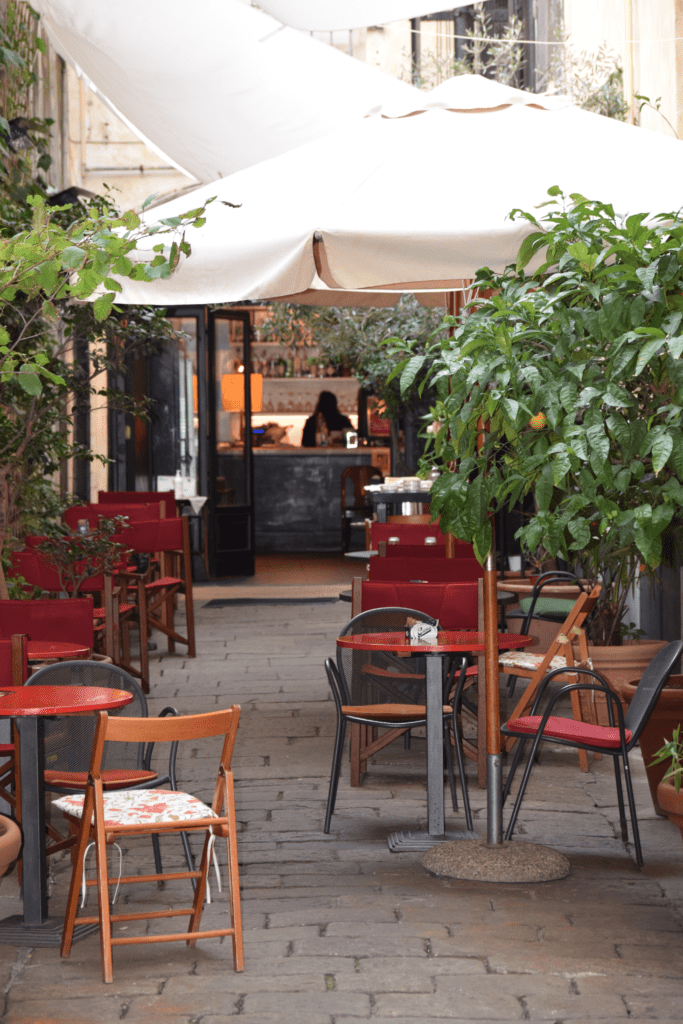
I really enjoyed my stay in Genoa and even though my fitbit clocked over 20,000 steps each day, I only saw a small part of this historic city. While I chose to walk everywhere there were several Tour Buses driving around and that would be a good option to see more of the city also.
I will be going back again to this historic and picturesque city. I want to visit the 6 museums again, see the chalice at the cathedral and have another bowl of minestrone soup, Genovese style !!!!
